In the Field with Equine Massage Experts
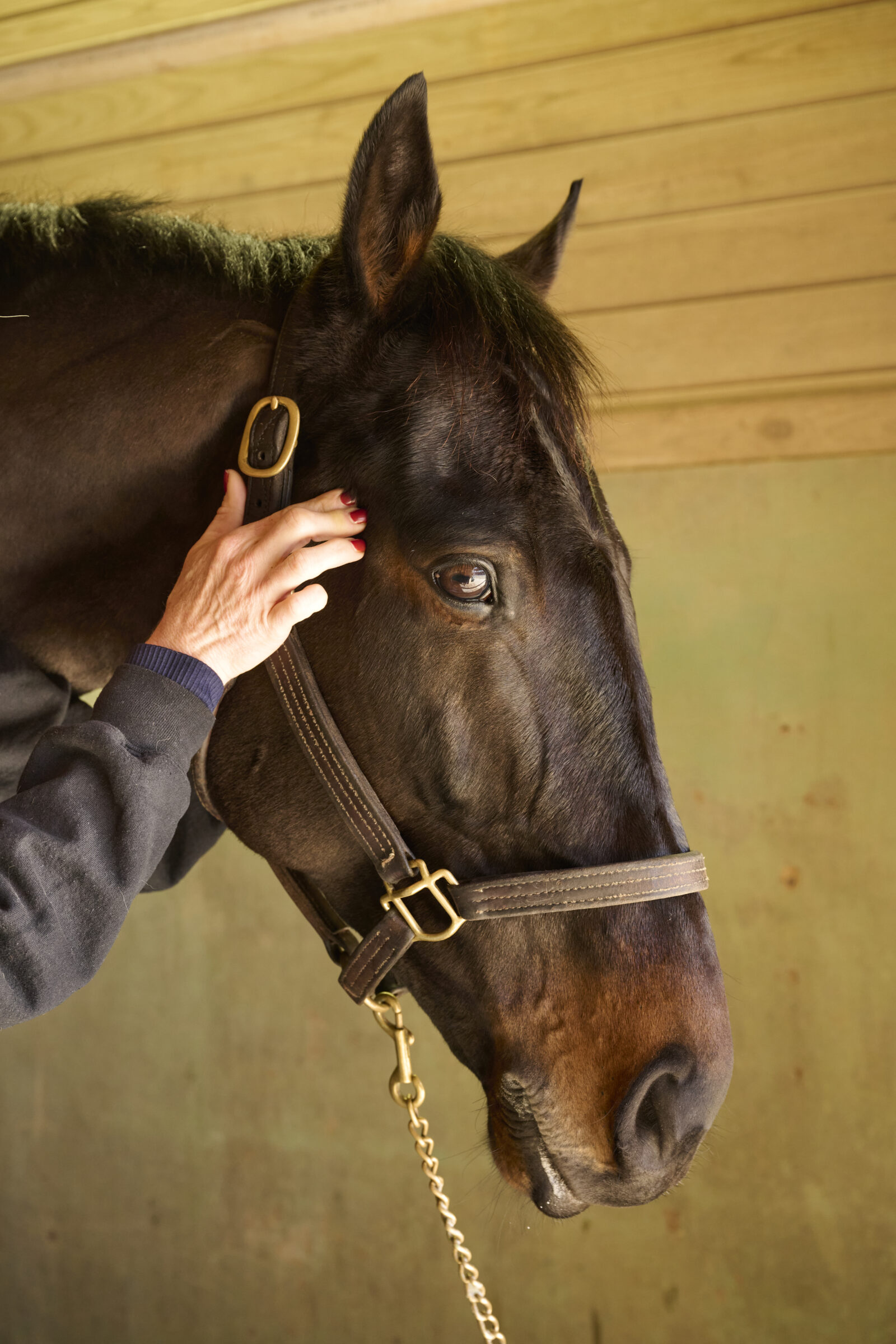
Written by Carlo Massimo | Photos by Shannon Ayres
As long as there have been athletes, it seems, there has been massage: the attentive manual manipulation of tight, tired muscles.
This poses a small problem, though. Hunt Country residents and equestrians know that not all athletes are necessarily people, as horses are the stars of any number of sports. Show jumping is a series of running high jumps; the steeplechase is like hurdling; polo ponies run like soccer players, while foxhunt mounts are like cross country runners; dressage horses bounce through their steps like rhythmic gymnasts. Even the humble lesson horse has a laboring job, bearing up patiently under riders of variable weight and questionable seat. Consider the strain put on human athletes in the way of shin splints, back pain, shortened stride from hip tightness, or aching knees and ankles. Why shouldn’t horses suffer the same problems?
They do, of course, and more and more therapists are offering massage services specifically for horses. Two local equine massage therapists, Stacey Lima and Linda Vegher, know the value of their occupation well.
“The horse’s body is like a machine,” Vegher explains. “Imagine a car engine, with the piston moving incorrectly in the cylinder. Or a kink in a garden hose. It’s the same with a horse.” Massage can “straighten the kink, if it is muscle tightness.”
Lima shares an anecdote from a prominent equine surgeon, “A horse can walk into a padded room and come out injured. They’re incredibly fragile animals.” She adds, “Horses are not as strong as they appear. When we have tight or sore muscles we can avoid making it worse by limiting exercise and getting off our feet. Unfortunately, our horses don’t have that luxury. and if something hurts they can’t tell us. Massaging a horse can ease the knots and painful muscles before it turns into something more serious.”
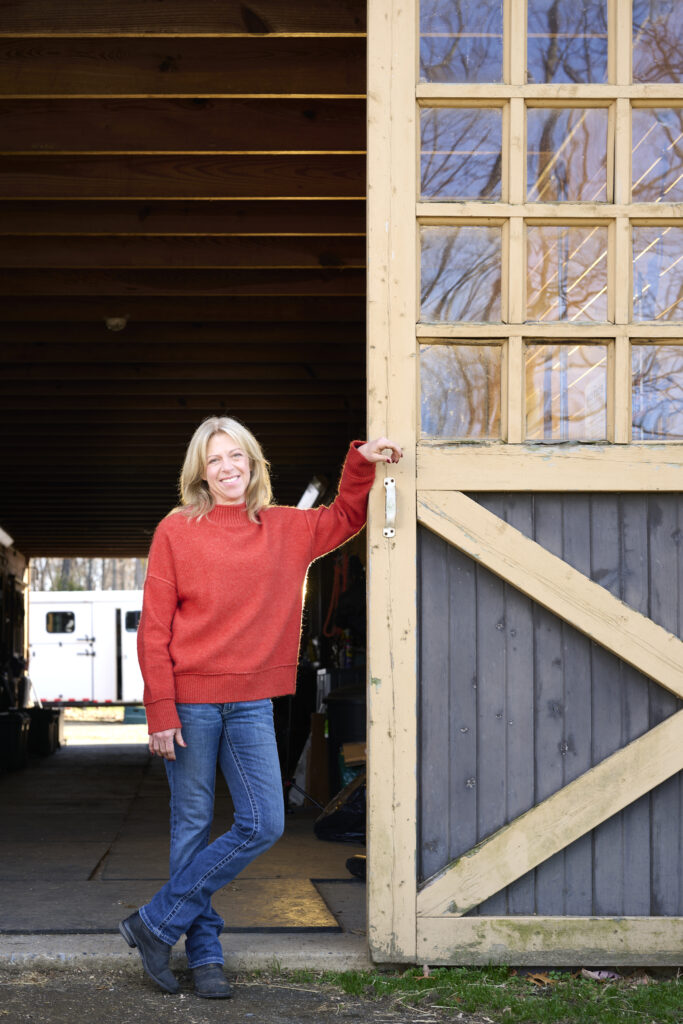
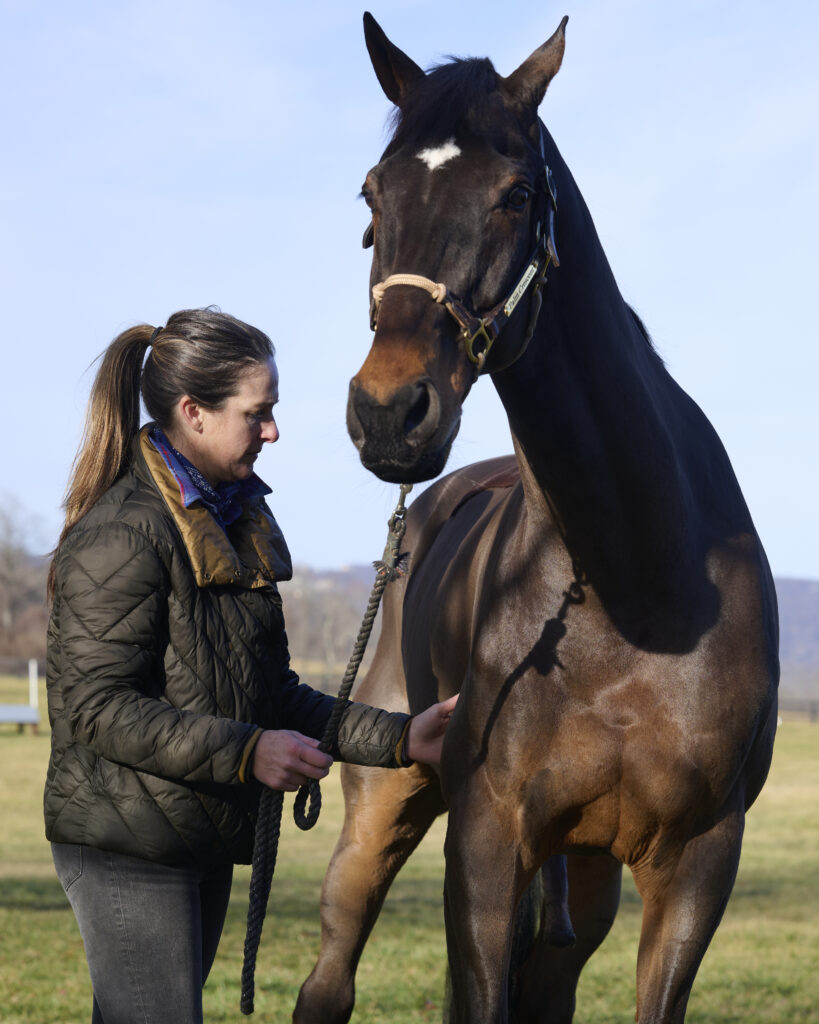
Both Lima and Vegher arrived at equine massage therapy the long way, after a lifetime in the saddle (and sometimes out of the saddle, in the case of Vegher, who as a child would mount any horse she saw in a field bareback). Lima started working with horses at age 9 and bought a retired racehorse in her teens and retrained it, training herself in the process; Vegher competed in every discipline from eventing to polo. Lima would go on to have a successful career in broadcast news, interrupted by the 2008 recession; Vegher in creative branding for companies like Wayfair.
Returning to horses, Vegher began working as a groom for champion equestrienne Nina Fout, accompanying her and the U.S. eventing team to the Sydney Olympics. It was there that she met the legendary equine team physio Jo-Ann Wilson, who introduced her to the Wilson Meagher Method of massage. Vegher began taking Wilson’s classes in 2016, and practicing soon thereafter. She would go on to become Wilson’s affiliate, representing her at the World Equestrian Games in 2022 and at the Pan Am Games in 2023.
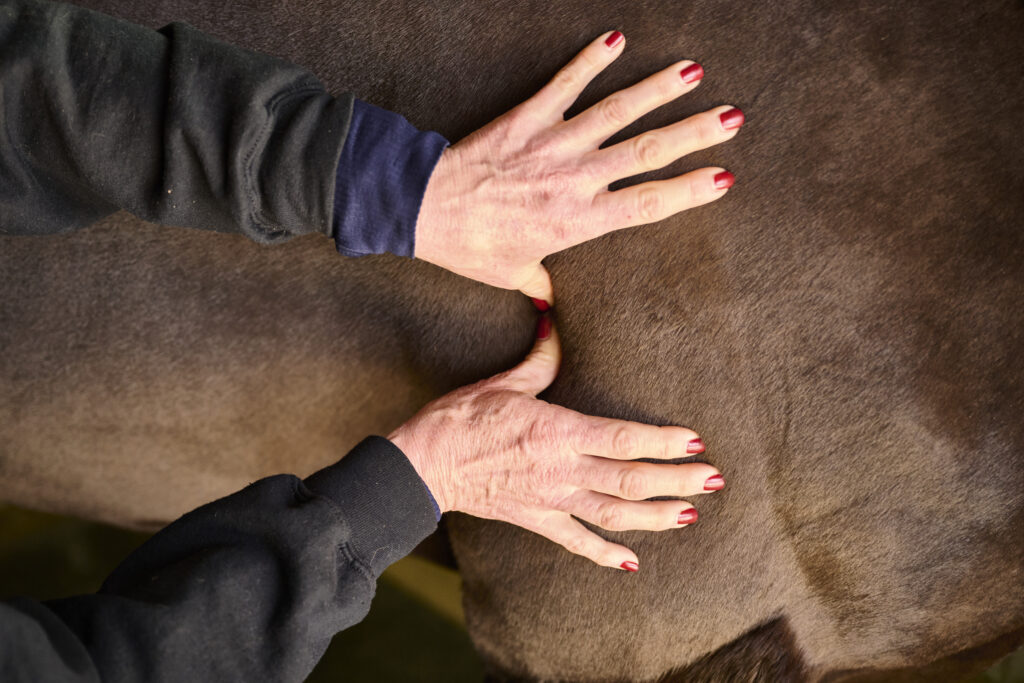
In 2008, Lima moved to Florida, eventually giving hunter-jumper lessons at the International Equestrian Center. She remembers the experience fondly, particularly her role in bringing middle and high school riders, who might otherwise have never afforded it, to national competitions. But notably, she also encountered new kinds of equine therapy — not just massage, but also acupuncture and chiropractic. The image remains burned into her memory of a notoriously bad-tempered horse almost asleep on its feet, relaxed to the point of salivation, under the hands of a masseur.
While at IEC, Lima helped rehab horses suffering from a variety of health concerns including, colic, pulled or torn tendons and ligaments, abscesses, and serious skin issues.
“I’d say 90% of bad attitude in horses is the result of pain,” Lima shares, and as she dug into the world of equine massage — the atlas of a horse’s muscles, the 25 bony landmarks, the role of fascia and myofascial release in a horse’s ability to move — she began to find that most of these problems were fixable. A horse that “falls in” to the left or the right often has tight neck muscles. A short, “stabby” walk could indicate hip problems. A “girthy” horse, who bites when the girth is tightened, may have rib problems, and sensitivity in the face is often a kind of equine TMJ problem, caused by poorly-fitted bits but responsive to massage.
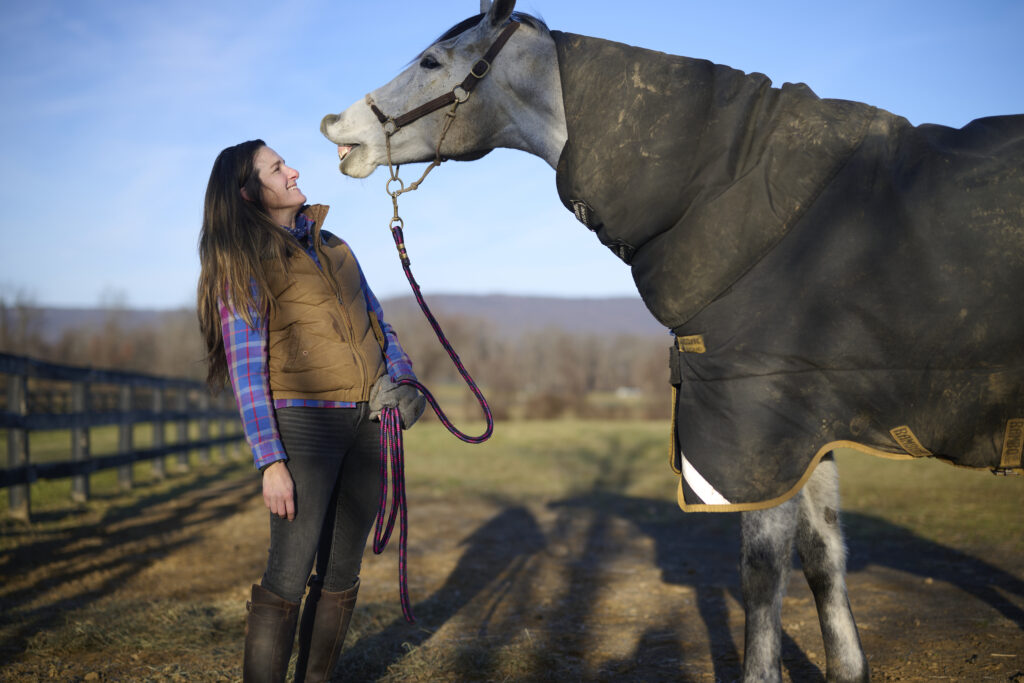
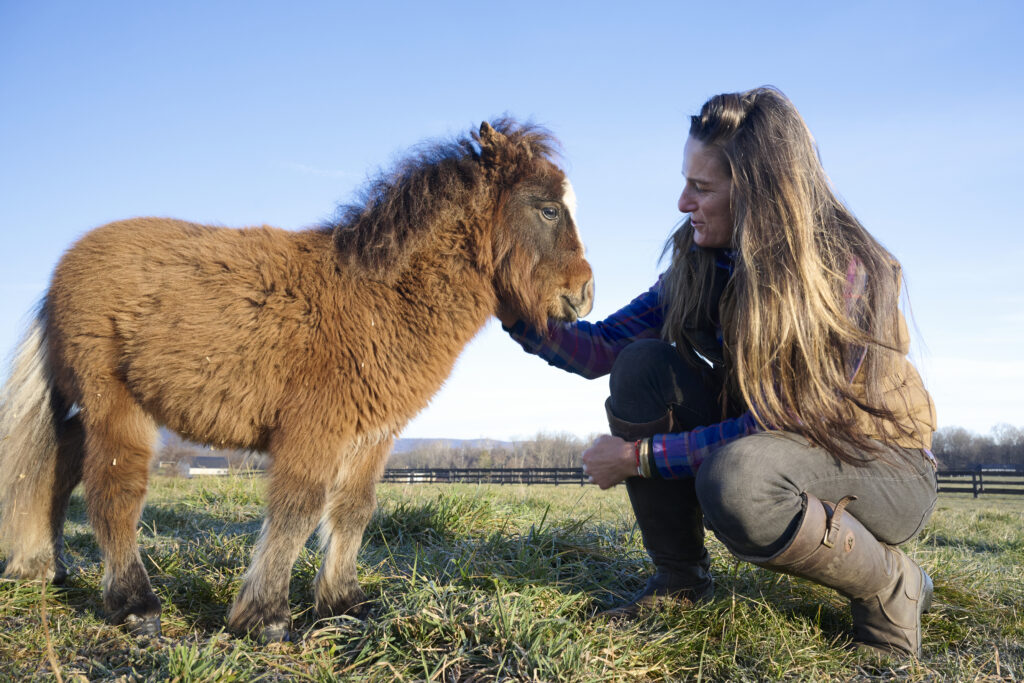
Lima, who received her certification at the Animal Rehab Institute in Loxahatchee, Florida, works through a series of lifting hooves to work a shoulder joint through a full range of motion, or applying even pressure to a muscle, or getting the horse to stretch. She recommends “carrot stretching,” coaxing the horse to stretch as far as comfortable to the left or right with a carrot. Lima also uses BEMER electric-wave technology as a warm-up or cool-down to restore circulation.
Following the Wilson Meagher method, Vegher typically watches a horse walk before working on them along with talking to the riders about any performance problems, “like drifting to the right or harder to the left.” After the session, and confirming the areas of muscle tightness, sometimes follow-up stretches or riding exercises are recommended. This method is made to improve motion, so riding is encouraged afterwards.
Sessions can take up to 45 minutes or an hour of careful observation and physical labor, but both Vegher and Lima are tough people. Vegher likes to call herself a problem-solver; Lima’s admiration for “underdog” horses is a clear indication of her own temperament. As equine massage becomes as widespread as currycombing or conscientious shoeing, it is because of people like this, tough and devoted to a broader idea of wellness. ML
Find Stacey Lima on Instagram at @equinerebalance and Linda Vegher online at eq-motion.com.
Published in the January 2024 issue of Middleburg Life.








